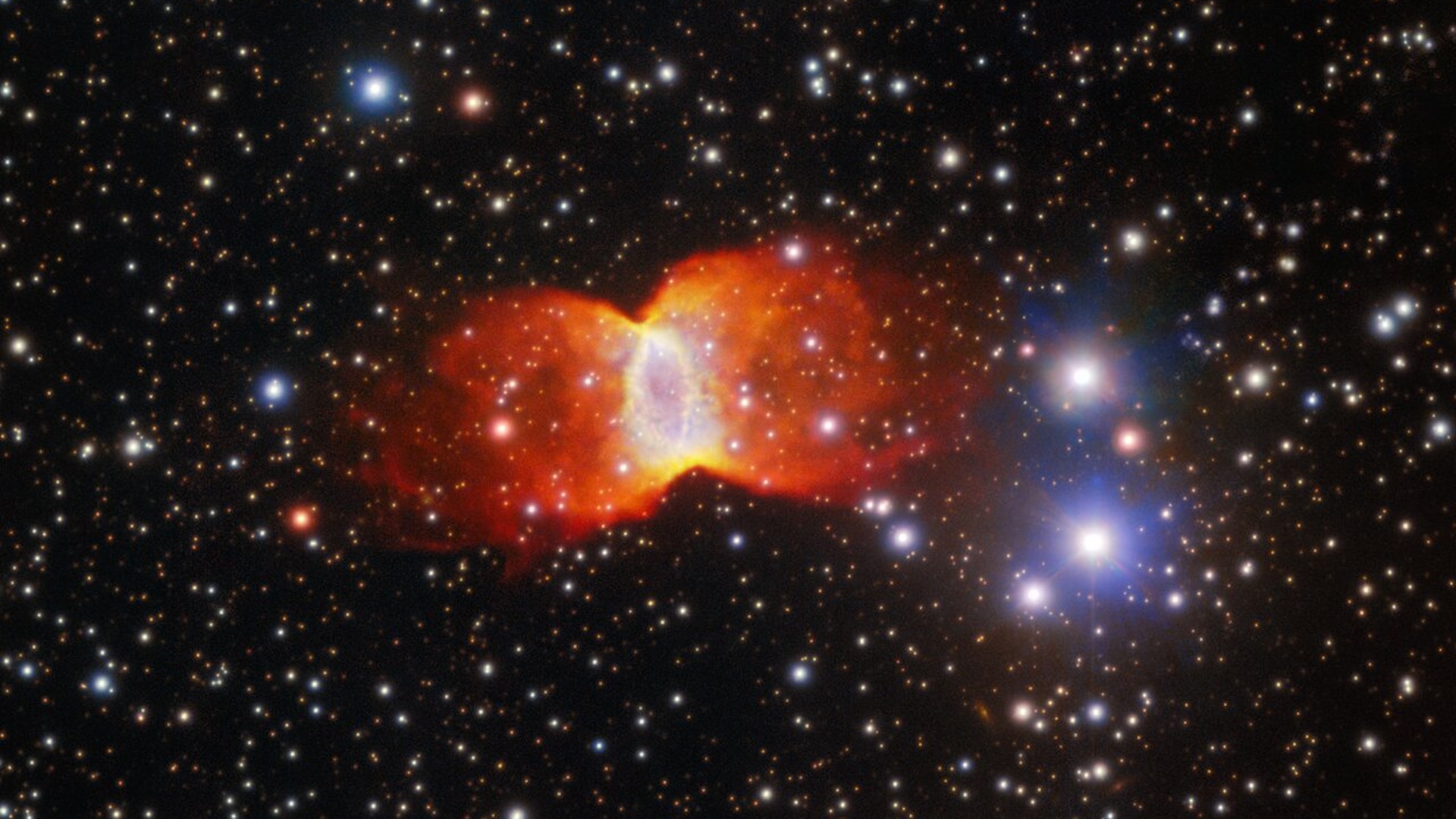
What it is: Kohoutek 3-46, a planetary nebula.
Where it is: 7,200 light-years distant in the constellation Cygnus.
When it was shared: July 24, 2024.
Why it's so special:
Death comes violently for massive stars. As they burn through their fuel and begin to cool, pressure drops and gravity takes control. A core collapse can follow, causing a bright supernova explosion.
However, that's not how all stars end their lives. When a smaller star about one to eight times the size of the sun exhausts its fuel, it expands into a cool red giant star. Eventually, it expels its outer layers of atmosphere. Those layers can glow for thousands of years in beautiful colors and shapes, illuminated by light from the star's leftover core, also called a white dwarf.
That's what's happening at Kohoutek 3-46, whose shape resembles a butterfly. It's estimated to be about 20,000 light-years old and is an unusual example of what astronomers call a planetary nebula. The term is misleading because Kohoutek 3-46 has nothing to do with planets. The name, coined by astronomer William Herschel in the 1700s, describes the rough shape of the object (most are circular) when viewed through a small telescope.
Kohoutek 3-46, however, isn't round but a bipolar hourglass shape, which accounts for only about 10 to 20% of planetary nebulas. It was discovered in 1964 by astronomer Luboš Kohoutek, who discovered 300 planetary nebulas throughout his career.
This image was captured by the Gemini North telescope in Hawaii, one half of the Gemini Observatory (the other is Gemini South in Chile's Atacama Desert). The Gemini North telescope is supported in part by the U.S. National Science Foundation (NSF) and operated by NSF NOIRLab.
Kohoutek 3-46 is currently riding high in the Northern Hemisphere's post-sunset night sky. Its constellation, Cygnus, is part of the famous "Summer Triangle" shape of stars (here's how to find it in the sky tonight). Close by is the constellation Lyra, which hosts the famous Ring Nebula (also called M57), a planetary nebula with a more typical shape.







